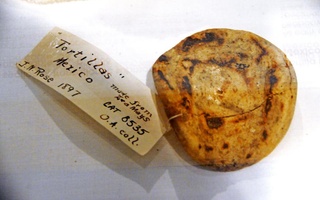Professor James T. Kloppenberg began his talk at a history department panel event on Wednesday night with a question: “When you hear the phrase ‘democracy in America,’ what comes to mind?”
Several audience members shouted out answers, but one attendee—who offered “a question mark” as an answer—helped set the tone for the rest of Kloppenberg’s talk.
Kloppenberg said that all the question marks of American democracy—the Electoral College, voter restrictions, and even the idea of voting itself—can only be puzzled out through the historical method.
“All of our understanding of democracy is historically constituted,” he declared.
Kloppenberg was among a handful of faculty members in the history department who spoke at Wednesday night’s panel, which was titled “Everything is History—History is Everything.” The event, which was part of the College’s Advising Fortnight, was aimed at students considering history as a concentration.
For the faculty members who spoke at the event, all the world—and especially Tuesday’s presidential election—can and should be viewed from a historical lens.
In her talk, history professor Emma Rothschild argued that particularly in this election year, candidates alluded to the nation’s past economic trends and events.
“All elections are historical,” she said. “But the U.S. election of 2012 was historical...in that it turned to an unusual extent to U.S. economic history and economic thought.”
In another presentation, Kelly A. O’Neill, an associate professor of history, showed how different narratives can be told using different types of maps.
While a typical electoral map of Tuesday’s election creates a geographic picture that seems to favor failed Repubican nominee Mitt Romney, a map that distorts state size based on population creates a clearer visual picture of President Barack Obama’s victory, O’Neill said.
Tuesday’s election was not the only current event discussed at the panel.
Ian J. Miller, an associate professor of history, used the example of the New York coastline to show how human efforts to shape the environment can have disastrous consequences.
Miller said that New Yorkers have long been extending their coastline outward, a process which he said was ultimately undone when Hurricane Sandy flooded the region last week.
In the final presentation of the night, History professor Laurel T. Ulrich focused on a subject closer to home for many audience members: the John Harvard statue’s toe.
Ulrich argued that the statue’s design gives us valuable insight into a 19th century perspective on the 17th century.
Ulrich said that memorials, even when constructed centuries later, are valuable because they can convey people’s memories of the past.
“I am here to argue that memory is history,” Ulrich said.
Read more in News
Mass. Votes To Legalize Medicinal MarijuanaRecommended Articles
-
New Course Emphasizes ObjectsA 100-year-old Mexican corn tortilla, a 19th century American painter’s palette, and a stuffed Bengal tiger will count among objects undergraduates will study in a new General Education course University Professor Laurel T. Ulrich will teach this spring.
-
Theory v. Praxis“It’s all very well in theory, but it doesn’t work in practice.”
-
Book Sees Harvard’s Influence on ObamaNietzsche, Weber, and former Harvard faculty members are among many thinkers who led Barack Obama to favor debates and compromises in his policy making in Washington, History Professor James T. Kloppenberg said last night in Boylston Hall.
-
 ‘Tangible Things’ Refuses to be Classified, Categorized
‘Tangible Things’ Refuses to be Classified, Categorized -
Budget Relief as Endowment IncreasesAfter two years of concentrating on everything from cutting visiting lecturers to trimming paper supplies, departments are turning their focus back on curricular and academic development.
-
 Professor Discusses Role of Mormons and Evangelical Christians in Election
Professor Discusses Role of Mormons and Evangelical Christians in Election













